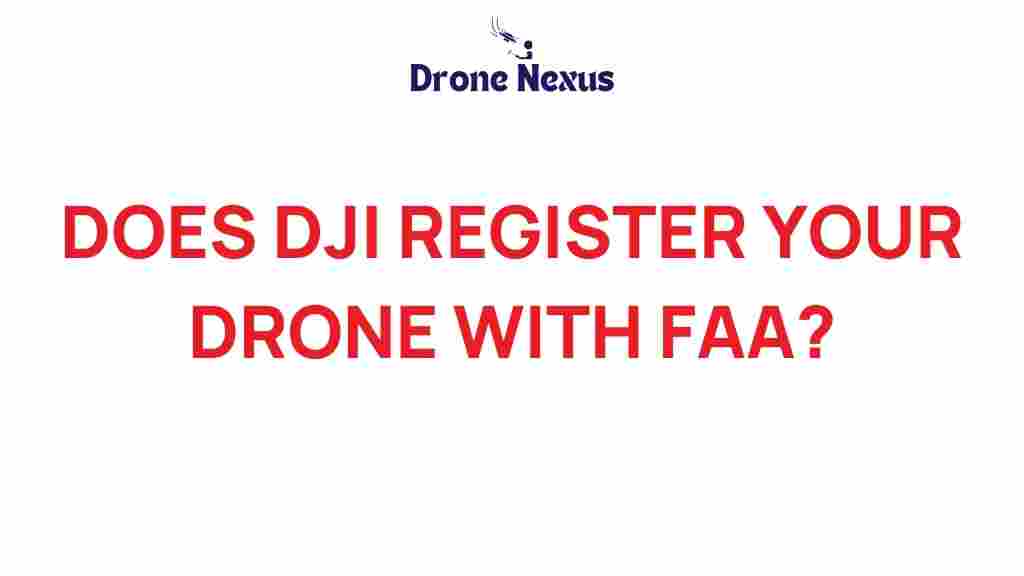Does DJI Automatically Register Your Drone with the FAA? What You Need to Know
As drone technology continues to gain popularity, the need for regulation has become increasingly important. One of the key aspects of drone ownership in the United States is registration with the Federal Aviation Administration (FAA). If you’re considering purchasing a drone from DJI, you might be wondering whether or not the company automatically registers your drone with the FAA. In this article, we’ll cover everything you need to know about DJI and FAA registration, including the registration process, what you need to do, and some troubleshooting tips.
Understanding FAA Registration Requirements
Before diving into the specifics of DJI, it’s essential to understand the FAA’s registration requirements for drones. The FAA mandates that:
- All drones weighing over 0.55 pounds (250 grams) must be registered.
- Registration must be completed before the drone is flown outdoors.
- Registration costs $5 and is valid for three years.
The registration process is straightforward, but it is crucial for compliance with U.S. laws and regulations.
Does DJI Automatically Register Your Drone?
The short answer is no, DJI does not automatically register your drone with the FAA. While DJI provides various tools and resources to facilitate the registration process, it is ultimately the responsibility of the drone owner to complete the registration. This means that if you purchase a DJI drone, you will need to take the initiative to register it yourself.
How to Register Your DJI Drone with the FAA
Here’s a step-by-step guide to registering your DJI drone with the FAA:
- Visit the FAA Drone Zone: Go to the FAA’s official registration website at FAA Drone Zone.
- Create an Account: If you’re a new user, click on “Register” and create an account by providing your email address and creating a password.
- Provide Your Information: Fill in your personal details, including your name, address, and contact information.
- Select Your Drone Type: Indicate whether you’re registering as a recreational user or for commercial purposes.
- Pay the Registration Fee: Complete the payment process, which is a nominal fee of $5. This fee covers the registration for three years.
- Receive Your Registration Number: Once your registration is successful, you will receive a unique registration number via email. Make sure to write this down!
- Label Your Drone: Use the registration number to label your drone in a visible location, as required by FAA regulations.
Why You Should Register Your DJI Drone
Although it may be tempting to skip the registration process, there are several compelling reasons to ensure your DJI drone is registered:
- Legal Compliance: Operating an unregistered drone can lead to fines and legal issues.
- Accountability: Registration helps the FAA keep track of drone usage and operators, which can aid in accident investigations.
- Increased Safety: Registered drones are subject to regulations that promote safer flying practices.
Common Issues and Troubleshooting Tips
While registering your DJI drone is relatively straightforward, you may encounter some common issues. Here are a few troubleshooting tips:
- Payment Issues: If you face problems during payment, ensure your credit card information is correct and try again.
- Email Confirmation Not Received: Check your spam folder if you don’t see the confirmation email. If you still can’t find it, you may need to contact FAA support.
- Registration Number Not Accepted: Double-check the registration number you received and ensure it is correctly labeled on your drone.
DJI and FAA: Working Together for Safety
DJI has taken several steps to help promote safe drone usage and compliance with FAA regulations. Here are some ways they contribute:
- Built-in Geofencing: DJI drones come equipped with geofencing technology that restricts flights in certain areas, such as airports and restricted zones.
- Safety Notices: DJI provides regular updates and notices to keep operators informed about safety protocols and legal requirements.
- Educational Resources: DJI offers various resources, including tutorials and articles, to educate drone users about flying safely and legally.
For more information about DJI’s safety features and resources, visit their official website at DJI Official Site.
Conclusion
In summary, while DJI offers advanced drones with a variety of features, it does not automatically register your drone with the FAA. As a drone owner, you are responsible for ensuring that your drone is registered before flying it outdoors. By following the outlined steps and keeping in mind the troubleshooting tips, you can easily complete the registration process and enjoy flying your DJI drone legally and safely. Remember, being a responsible drone operator is not just about having fun; it’s about ensuring safety and compliance with regulations. Happy flying!
This article is in the category Safety and created by DroneNexus Team
